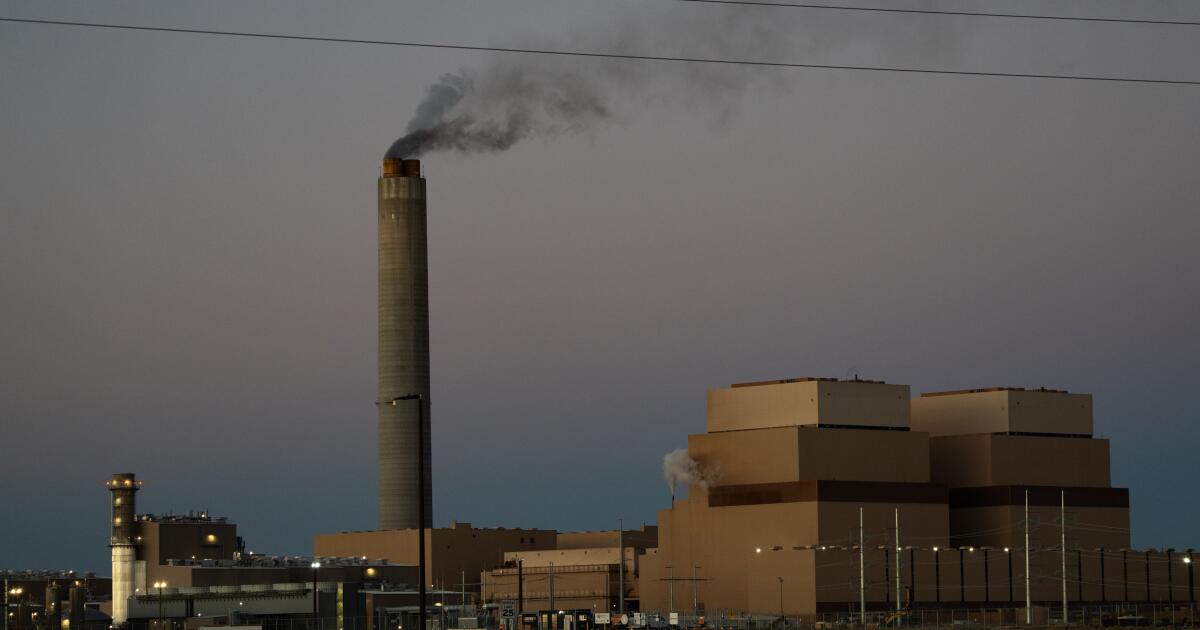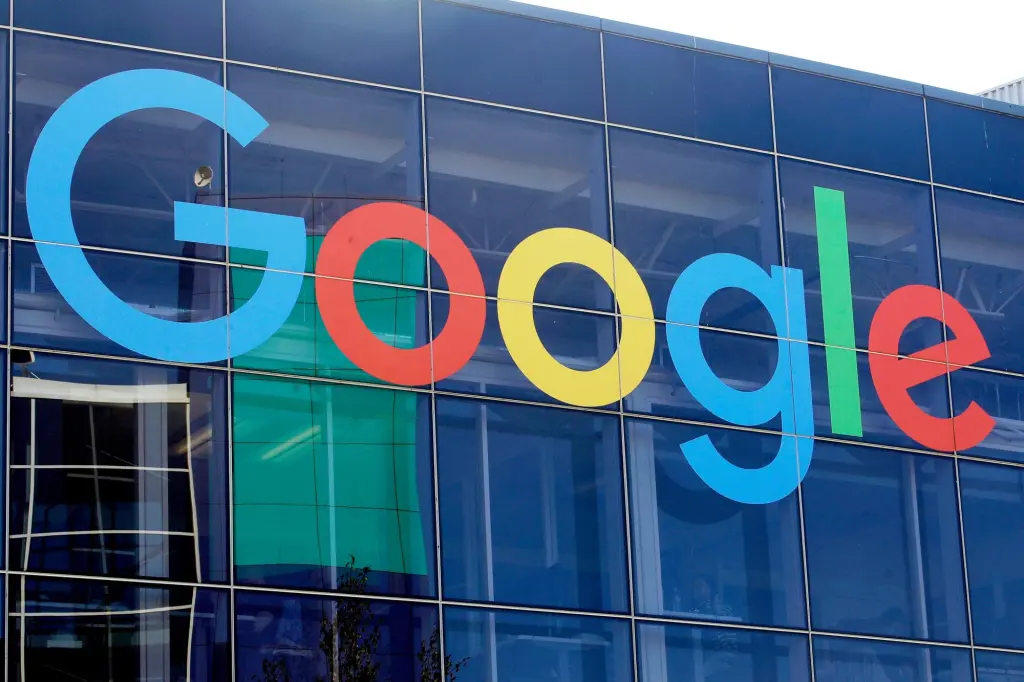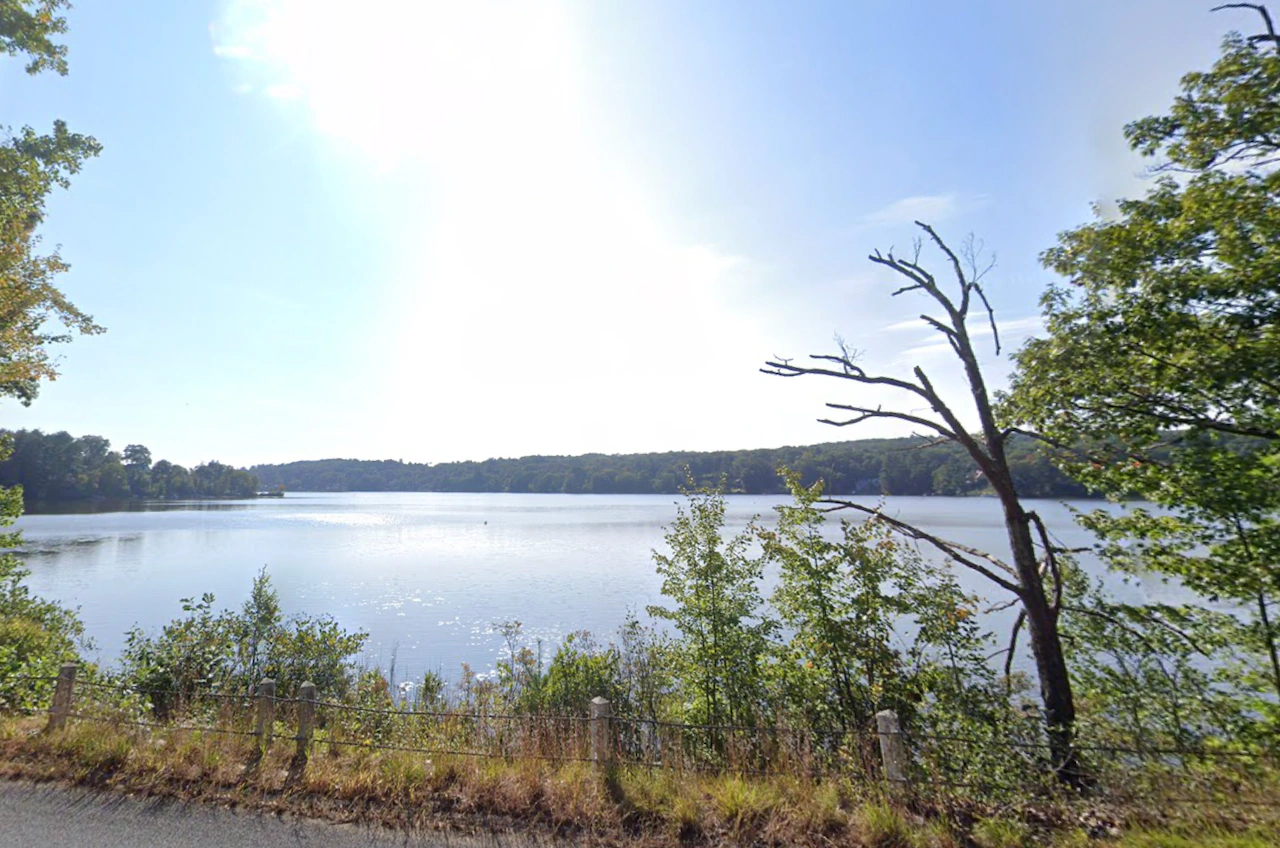
If I didn’t know better, I might have thought Intermountain Power Plant was already dead.
When I visited last month, most of the desks had been torn from the administrative building, leaving behind scattered piles of boxes and office supplies. A whiteboard featured photos of dozens of newly retired employees. Perhaps most tellingly, the coal pile in the yard out back was tiny compared with my previous visit in 2022.
“Our target is to have no coal left on the floor,” said Kevin Peng, manager of external generation for the Los Angeles Department of Water and Power.
Peng was my tour guide at this hulking coal-fired power plant in central Utah, over 500 miles from the city it has powered for the last 40 years. And no, it wasn’t dead yet. One of two massive steam turbines, a General Electric unit installed in 1986, was still sending small amounts of electricity to L.A. and several other Southern California cities following a required air quality test. Soon Unit 1 would shut off, probably for the final time.
Unit 2 would carry Intermountain through its final act. At the moment it was slowly preparing to generate power, releasing puffy white steam through a small vertical pipe near the main smokestack. I stood on the roof for a few minutes near the pipe, letting water droplets fall gently on my face and reporter’s notebook.
“We create our own rain,” Peng with a smile.
Come November, the rain will cease. Same goes for the planet-warming carbon emissions. Los Angeles is closing Intermountain, a watershed moment that will mark the end of coal power in California.
To hear President Trump tell it, coal is needed for economic prosperity. Just this week, his administration said it would open 13 million acres of public land to coal mining and offer $625 million in handouts to coal plant owners.
Trump & Co. — including Energy Secretary Chris Wright, a former fossil fuel executive, who insisted the handouts “will be vital to keeping electricity prices low and the lights on without interruption” — are battling the free market. Coal plants generated 16.2% of U.S. electricity in 2023, down from 48.5% in 2007. The main culprit? Competition from cheaper solar, wind and natural gas.
In California, just 2.2% of electricity came from coal in 2024 — nearly all of it from Intermountain. Over 60% was generated by solar panels, wind turbines and other climate-friendly sources that don’t fuel deadly wildfires, heat waves and floods. Thanks to a surge in lithium-ion batteries, there have been no power shortages since 2020.
The L.A. Department of Water and Power, meanwhile, has been making big investments in low-cost renewables, including a record-cheap solar-plus-storage plant that opened this summer. DWP has fired up Intermountain less and less, relying on the plant for 21% of the city’s power in 2019 and just 10% in 2023.
Jason Rondou, the utility’s assistant general manager for power planning and operations, said the coal plant has supplied affordable, reliable electricity for decades. But now there are better options.
“It’s come at a pretty significant external cost — the cost of the carbon emissions,” he said. “For us to move beyond that and move to a cleaner, innovative technology, I think is very exciting.”
Indeed, Los Angeles isn’t just closing Intermountain. It’s built a first-of-its-kind power plant across the street.
The new turbines are designed to burn a mix of 70% natural gas and 30% hydrogen. Although gas is a fossil fuel that exacerbates global warming, hydrogen isn’t. That mix alone is unique for a plant of this scale. But over time, as technology improves, DWP plans to transition to 100% hydrogen — an unprecedented undertaking.
Even better, the hydrogen will be “green,” meaning it’s made from renewable electricity rather than fossil fuels.
At times of day when DWP has extra renewable power — such as mild spring afternoons, when the sun is shining and Angelenos aren’t blasting their air conditioners — the utility can use that energy to split water molecules into hydrogen and oxygen atoms. DWP and its partners have hired a private company to store the hydrogen in giant underground salt caverns just down the road from Intermountain.
Then, when DWP needs extra power — during a heat wave months later, for instance — it can pull hydrogen from the caverns and fire up the turbines. Basically, the hydrogen will function like a long-term battery.
“It’s very different from lithium-ion [batteries],” Rondou said. “For that seasonal storage, that’s where hydrogen can really provide significant benefit.”
Among environmentalists, hydrogen is controversial. Some share DWP’s view that it’s a necessary piece of the clean energy puzzle. Others consider it a distraction from cheaper, more proven technologies, and a threat to air quality, especially in low-income communities of color. They’ve slammed DWP’s goal of eventually converting four L.A.-area gas plants to hydrogen, citing nitrogen oxide pollution and potential methane leaks.
In Utah’s Millard County, conservative local officials have embraced the newfangled technology, along with solar and wind. Unlike Trump, who has slashed hydrogen funding, they have little aversion to clean energy.
“Energy development is really important in our portfolio. And we will talk to everybody. We’re open for business,” said County Commissioner Bill Wright.
Sitting in his living room, as dogs and grandkids wandered past, Wright reflected on his rural county’s long relationship with Los Angeles. The massive tax revenues, the hundreds of jobs. The lack of local control. The fact that nearly all the power goes to California.
Wright would have liked to see DWP keep the coal plant running. But the closure has been in the works for years, so he and his neighbors have had time to adjust. He’s glad L.A. isn’t leaving town entirely — even though the new plant will be smaller, with fewer jobs and a smaller tax base.
“Absolutely, this is a better solution,” he said.
Wright is hopeful that the Utah Legislature will find a buyer for the coal plant, possibly a data center. One of his colleagues on the county commission, Vicki Lyman, is less optimistic. She’s worked at Intermountain for a dozen years and sees major technical and economic hurdles to restarting a mothballed power plant.
“I’m kind of excited just to see how all this technology’s going to work out,” Lyman said.
It’s still not entirely clear when DWP will start combusting hydrogen. The new plant will burn 100% gas when the coal turbines power off in November, utility officials say, because there won’t be enough hydrogen banked in the salt caverns yet. DWP is targeting the second quarter of 2026 to mix in 30% hydrogen.
For employees, DWP has tried to make the transition as painless as possible. It’s limited layoffs by not replacing retiring staffers, and by offering tuition reimbursement to anyone who chooses to go back to school.
Still, change can be bittersweet. While touring Intermountain, I bumped into plant manager Jon Finlinson, who’s worked there since 1983 and would have retired already if the gas/hydrogen units weren’t running a few months behind schedule. He professed excitement for the new facility. But when I asked him how he’d commemorate the final day of coal combustion, he offered the verbal equivalent of a shrug.
“Oh, I don’t know,” he said. “We don’t have a plan for that yet.”
Really? After 40 years, nothing?
“It’ll be a sad day for all the people that have worked here for their whole life,” he acknowledged.
Technically, even after Intermountain stops sending coal power to L.A. — as well as Anaheim, Burbank, Glendale, Pasadena and Riverside — there will still be tiny amounts of coal in California’s energy mix. A Riverside County electric cooperative imports coal from out of state, as does Berkshire Hathaway-owned Pacific Power in Northern California. In San Bernardino County, two small coal plants fuel a mining operation.
Together, those coal generators supplied less than 0.2% of the state’s electricity in 2024. (If you want to get really technical, an additional 1.5% came from “unspecified” out-of-state sources, most likely gas and coal.)
But why quibble when there’s cause for celebration? Change is never easy; no solution is perfect; there will always be caveats.
Next month, California is quitting coal. Raise a glass.
This is the latest edition of Boiling Point, a newsletter about climate change and the environment in the American West. Sign up here to get it in your inbox. And listen to our Boiling Point podcast here.
For more climate and environment news, follow @Sammy_Roth on X and @sammyroth.bsky.social on Bluesky.



